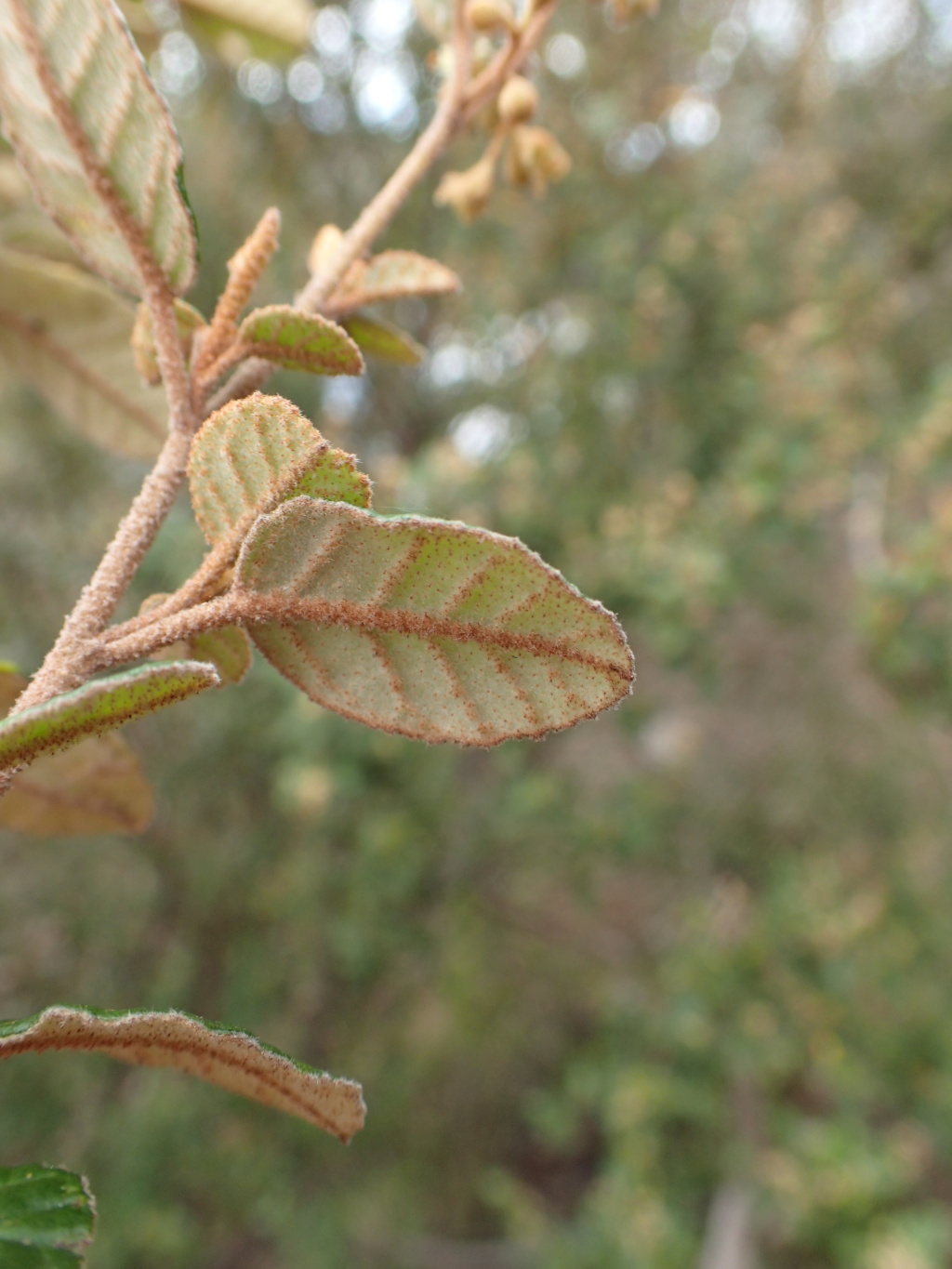Pomaderris halmaturina subsp. continentis
N.G.WalshShrubs 1.5–5 m high; branchlets greyish and/or rusty stellate-pubescent. Leaves ovate, 15–50(–100) mm long, 7–17(–30) mm wide, obtuse or acute, margins shallowly sinuate, rarely bluntly toothed, upper surface glabrous or with scattered simple or stellate hairs, secondary veins strongly impressed, lower surface densely greyish or rusty stellate-pubescent; stipules 2–3.5 mm long, deciduous. Panicles rather sparse, narrow, sometimes racemose, subequal to subtending leaf; bracts deciduous. Flowers yellow-green, or tinged crimson, externally densely grey or rusty stellate-pubescent; pedicels 0.5–5 mm long; hypanthium 1–1.5 mm long; sepals 1.5–2 mm long, persistent; petals absent; disc absent; ovary inferior, summit stellate-pubescent, style branched near middle. Operculum membranous, filling most of inner face of mericarp. Flowers Oct.–Nov.
GleP, VVP, OtP. Occasional along the lower Glenelg river in the far south-west of Victoria where occurring on limestone-derived and alluvial soils, with a disjunct easterly occurrence near Torquay. Usually growing in shrubland or shrubby open-forest.
The type subspecies is confined to South Australia, on Kangaroo Island and in the far south-east.
Walsh, N.G. (1999). Pomaderris. In: Walsh, N.G.; Entwisle, T.J., Flora of Victoria Vol. 4, Cornaceae to Asteraceae, pp. 85–109. Inkata Press, Melbourne.
 Spinning
Spinning

